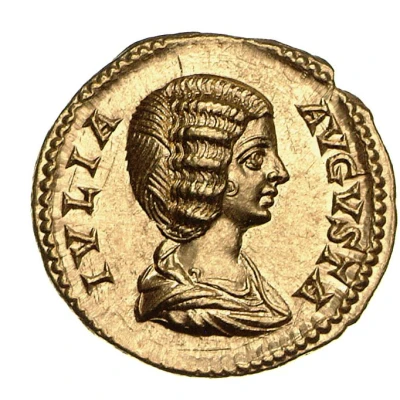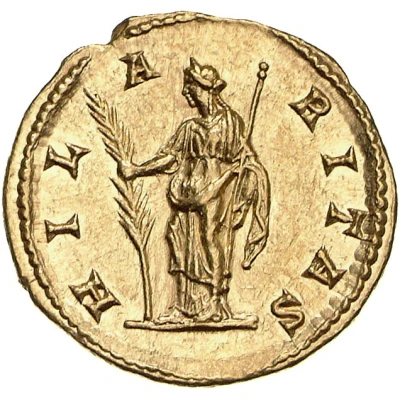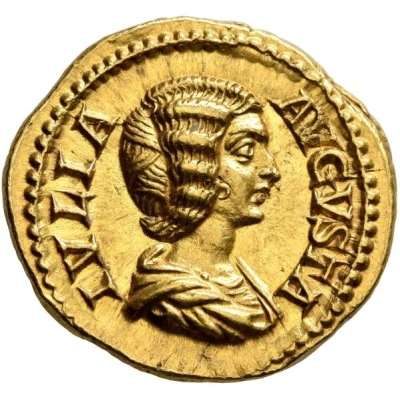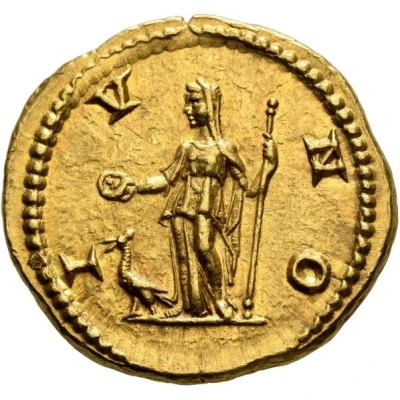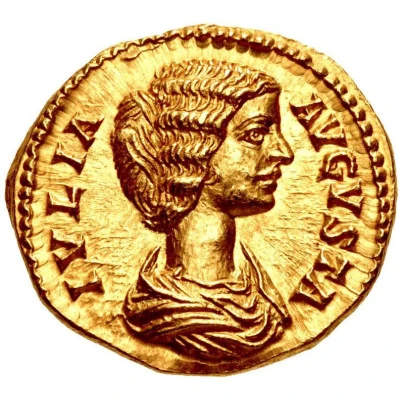
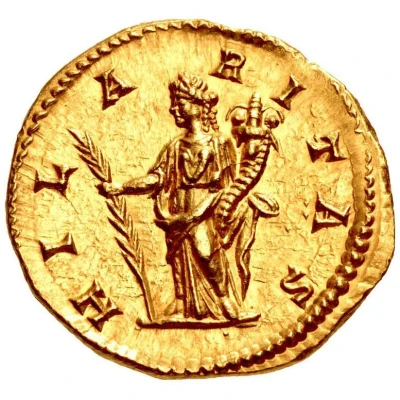

© Classical Numismatic Group, Inc.
Aureus - Julia Domna HILARITAS; Hilaritas
| Gold | - | - |
| Issuer | Rome › Roman Empire (27 BC - 395 AD) |
|---|---|
| Empress | Julia Domna (193-211) |
| Type | Standard circulation coin |
| Years | 196-211 |
| Value | 1 Aureus = 25 Denarii |
| Currency | Denarius, Reform of Augustus (27 BC – AD 215) |
| Composition | Gold |
| Shape | Round (irregular) |
| Technique | Hammered |
| Demonetized | Yes |
| Updated | 2024-10-05 |
| Numista | N#269907 |
|---|---|
| Rarity index | 100% |
Reverse
Hilaritas, draped, standing left, holding long palm in right hand and cornucopiae in left hand.
Script: Latin
Lettering: HILARITAS
Translation:
Hilaritas.
Joy.
Comment
Source:Online Coins of the Roman Empire (OCRE)
Interesting fact
The Aureus - Julia Domna (HILARITAS; Hilaritas) coin was issued during the reign of Emperor Septimius Severus (193-211 AD) and features his wife, Julia Domna, on the obverse (front side). The reverse (back side) of the coin depicts the goddess Hilaritas (Hilarity) standing left, holding a flower and a scroll. The coin was minted in Rome and was made of gold, which was a valuable and prestigious metal at the time. Interestingly, the coin's design was meant to promote the idea of happiness and joy, which was an important theme during the Severan dynasty. The image of Hilaritas on the reverse was meant to symbolize the happiness and prosperity that the Roman Empire was experiencing during this period. The coin's message of happiness and prosperity was likely intended to promote the idea that the Roman Empire was a place of peace and prosperity, and to reinforce the idea that the Severan dynasty was a strong and stable ruling family.
